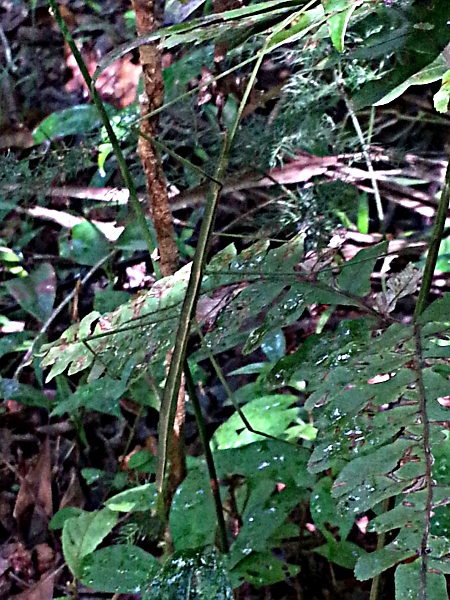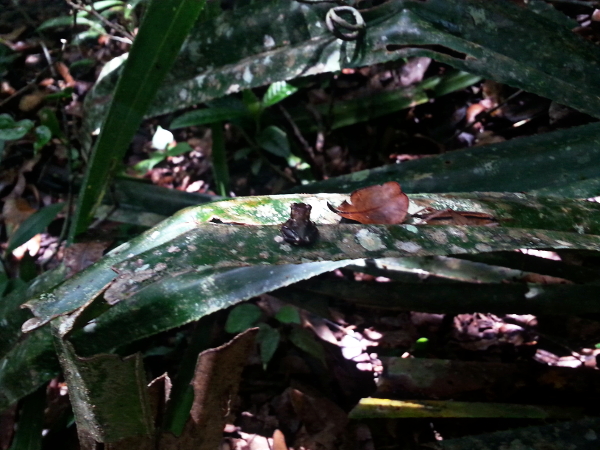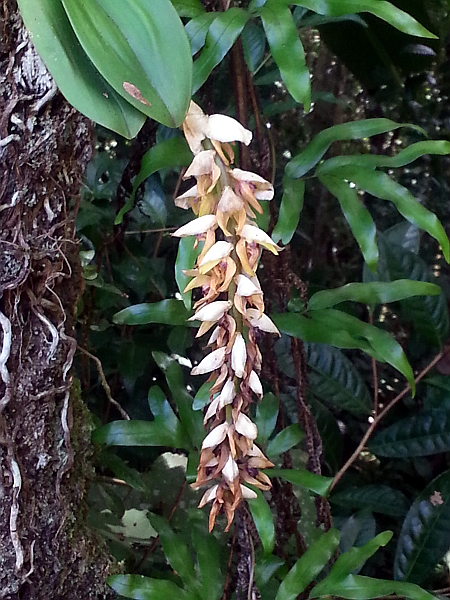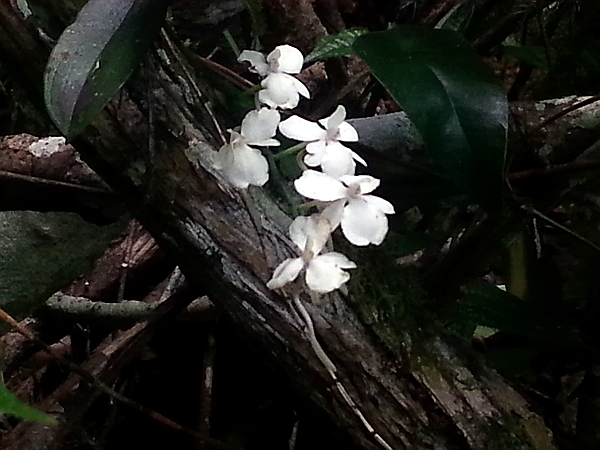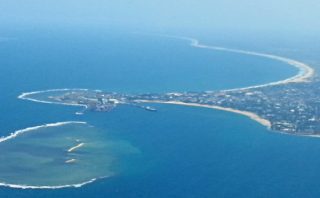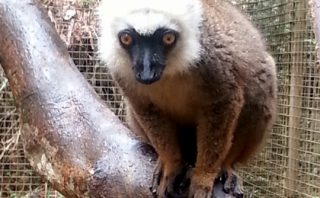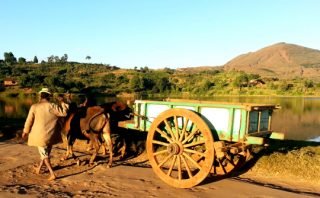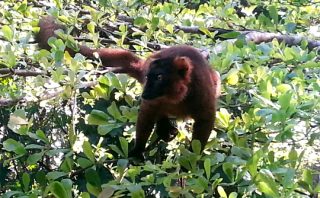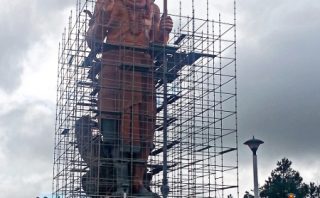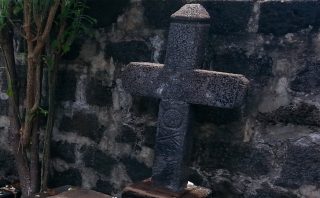“Hey, Bary, here’s one.” Bary is my guide at Association Mitsinjo. Rock, rock, step. Rock, rock, step. The chameleon strolls along.
Bary tells me this is a female short horned chameleon. There are six known species of chameleon in the Analamazaotra Forest Station in Andasibe and the short horned is the second largest one. Bary gets a stick and encourages the chameleon to climb up on it. Then he sets her on the trunk of a tree. He doesn’t want anyone to step on her.
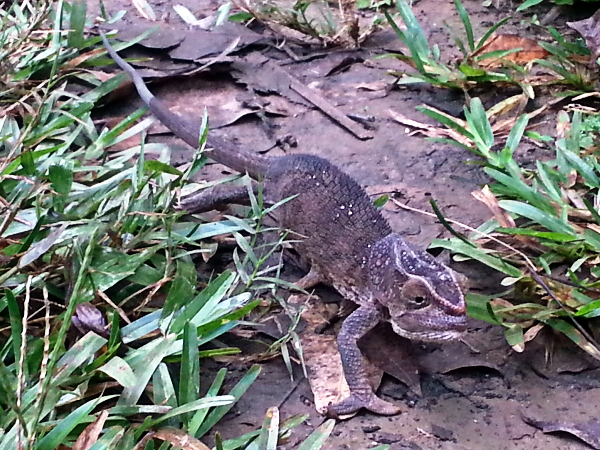
For those who have to know this sort of stuff like I do: Madagascar’s chameleons include half of all the world’s 150 or so known species of chameleon.
I’d been to Andasibe about seven times before this visit. Three were to spend a couple days and see the lemurs in Andasibe National Park, and the other were just over night stops on the way to Antananarivo. Maybe I’ve mentioned this before? I’m not fond of the eight hour drive from Tamatave to Tana so I usually just drive the four hours to Andasibe and take an overnight break before finishing the drive. Same thing the other direction.
This time, however, I’ve come to Andasibe solely to visit Mitsinjo. Given the conditions of travel in Madagascar, Mitsinjo is within my four hour circumference of reasonable and affordable for a traveler or expat to see and do from Tamatave. Four hour circumference means you can get there in four hours — umm, usually.
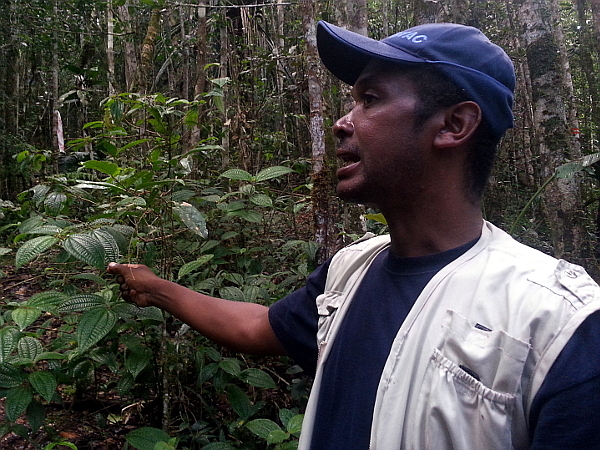
Association Mitsinjo
I ask Bary how long he’s been a guide. He was born here in Andasibe and has been a guide for Mitsinjo for ten years.
Mitsinjo is a Malagasy word that means to look ahead to care for the future. Association Mitsinjo was formed in 1999 by residents of the village of Andasibe who were interested in securing work as guides for the growing number of tourists visiting the area.
Their work has grown beyond guiding. In 2003, they gained management of the 700 hectare (1700 acres) Analamazaotra Forest Station across the road from Andasibe National Park. In 2005, they took on management of the 9,900 hectare Torotorofotsy wetlands (about 24,500 acres).
Today, the Association is comprised of more than 50 members from the Andasibe area. They guide visitors at Analamazaotra in Andasibe and Torotorofotsy, which is about 14 kilometers away (about eight miles). They also guide in nearby Mantadia National Park, Maromiza Reserve, and Vohimana Reserve. In addition, they have projects in reforestation and rainforest restoration, environmental education, amphibian conservation, and lemur monitoring. They are also part of projects in community health care, sustainable agriculture, and a women’s artisinal handicrafts group. Mitsinjo estimates their work impacts 400 households in the Andasibe area. Revenue for their work comes from visitors. I’m happy to support them with my ariary.
Up and Down
Bary and I are headed out on the Babakotokely Circuit. Babakotokely translates as small babakoto (small indri lemur) circuit and is a one to two hour walk. The Reforestation Circuit, another one to two hour walk that includes tree planting, Torotorofotsy, a night hike, Mantadia National Park, and visits to the forest reserves will have to wait for another time.
As we start into the forest, we come across another chameleon. This one is a stump tail chameleon and is hanging out about a meter (three feet) up on the trunk of a sapling. They’re also known as the brown leaf chameleon. Bary explains they’re usually seen on the night hikes and on the ground. They spend their time foraging among the leaves on the forest floor and look themselves like a dried, rolled up leaf. Nice bit of camouflage. They are known to climb up to 1-1/2 meters off the ground.
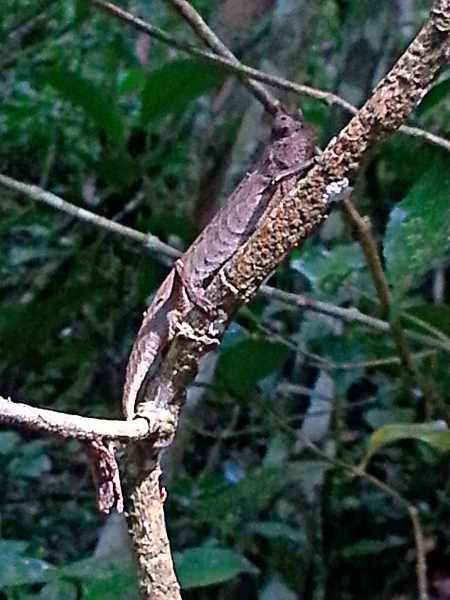
The trail we’re on goes up and down a bit then up a lot. There are ups and downs on the trails across the way at Andasibe National Park but not like this. I recall the Park trails being a bit more developed as well. There are a lot fewer social, “let’s go off the trail to see the lemur” tracks cutting through the forest here in Mitsinjo than at the park. I have the feeling a lot fewer people muster up to walk Mitsinjo’s hills.
We hear babakoto, the indri, calling. There aren’t any trails leading in their direction, so we continue along the one we’re on noting crab spiders, Darwin spiders, a yellow orchid, and a blue koa. Koas are birds of the cuckoo family and the blue koa is a Madagascar native.
We come to a pavilion in the forest and Bary asks me to sit a moment while he sees if he can locate the indri. No problem. I take a few minutes to write some notes and delete poor photos from my smartphone.
Bary returns. He’s found them. We walk downhill on the trail a bit and then downhill in the forest. It’s tricky going sometimes. Then I see them; two members of the indri family whose territory is nearest the Mitsinjo headquarters. We watch them for awhile. They watch us only now and then when crack from a breaking stick underfoot gets their attention.
A commotion in the trees and more of the family shows up. We move for a better view. Now we watch four indri. Indri stay together in family groups of a father and mother and their young offspring. Older offspring move away to find a mate and claim their own territory.
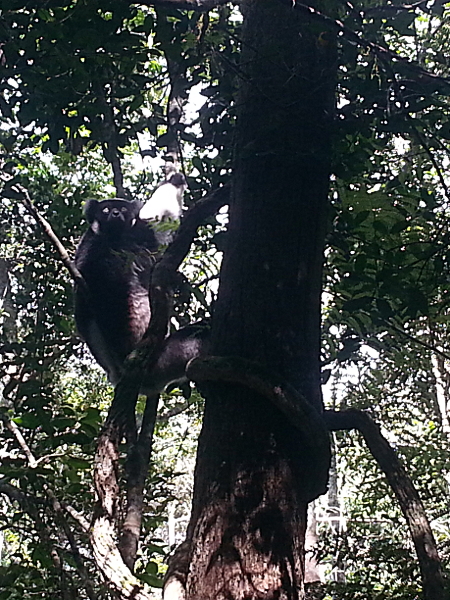
I enjoy watching lemurs. They are amazing creatures, especially the indri. However, as usual, I start to get a pain in the neck from looking up in the trees for so long. And, as usual, there are also lots of amazing things to see in the Malagasy forests by looking down. I look down and Bary looks down. We see a stick bug.
We continue to look down, mostly, as we walk down the hill to the Orchid Park. Bary points out an elephant beetle hiding in the leaves of a vakona. Then he finds a small frog in another vakona. Bary gets very excited when we see a pygmy kingfisher. He says this bird isn’t seen very often in Andasibe and tells me to take many pictures. I do, even knowing that bird pictures don’t usually turn out so well on my smartphone. For awhile, we follow a Francess sparrowhawk that flits along ahead of us on the trail. Then we tour around the Orchid Park. There aren’t very many orchids blooming now. Bary tells me the best time to see them is in the spring, southern hemisphere spring — October, November, and December. Yes, I still have a hard time wrapping my head around calling that time of year spring. It is what it is.
We leave the Orchid Park and walk down the paved road past the Andasibe National Park headquarters and to Mitsinjo. Bary encourages me to come back and walk in Mantadia National Park and the Torotorofotsy wetlands. I will, my friend. See you then. Mazatoa!
